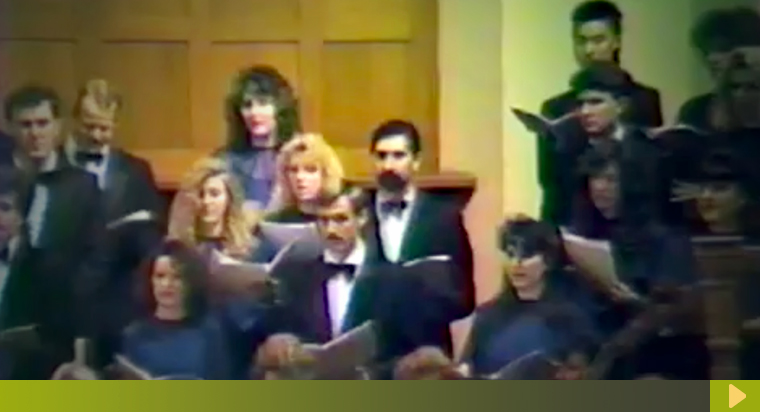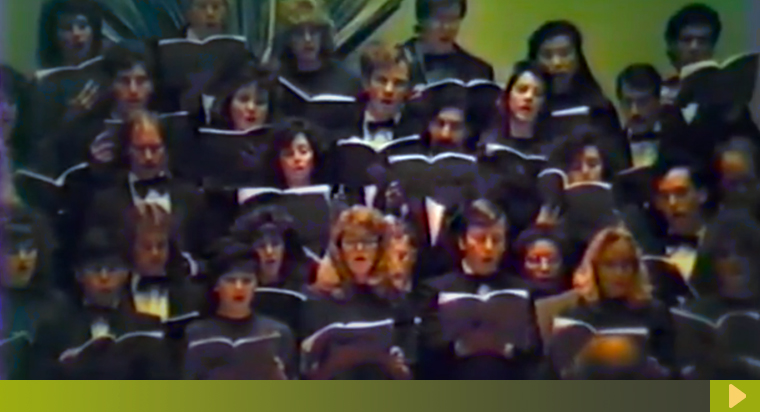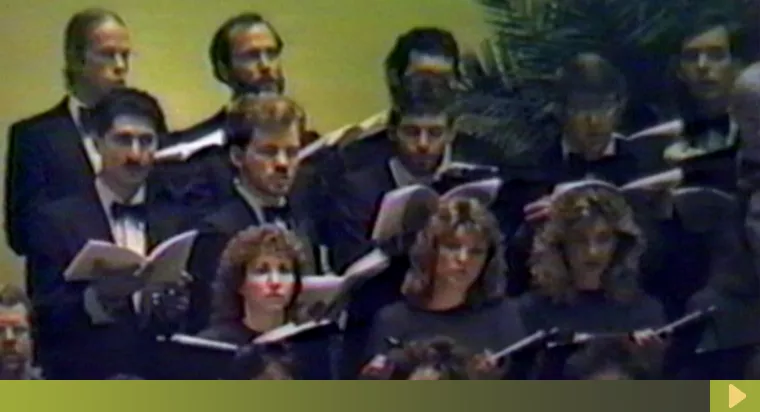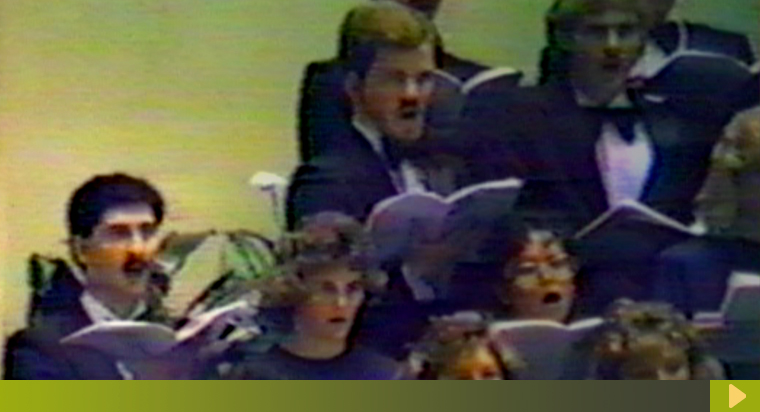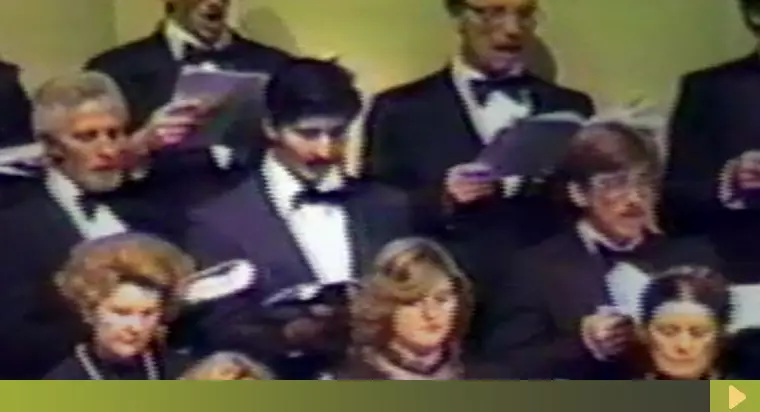2018

Amy Beach: Canticle of the Sun
Mozart: Great Mass in C minor
Calvary Presbyterian Church, San Francisco
San Francisco Choral Society
Conducted by Robert Geary
2016

Duruflé: Requiem, Quatre motets sur des thèmes grégoriens
Howells: Te Deum & Jubilate (Collegium Regale)
Fauré: Cantique de Jean Racine
Calvary Presbyterian Church, San Francisco
San Francisco Choral Society
Conducted by Robert Geary
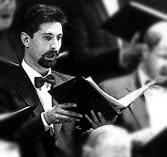

Verdi: Requiem
Davies Symphony Hall, San Francisco
San Francisco Choral Society
Conducted by Robert Geary
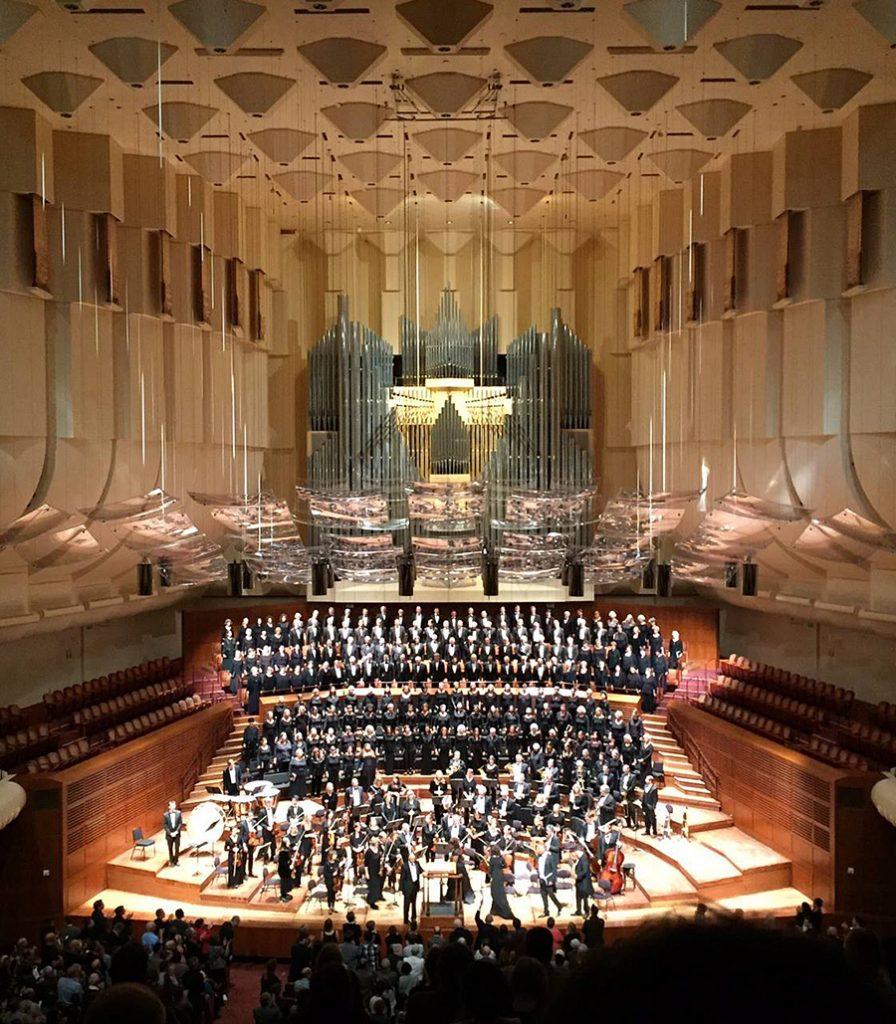
2015

Mozart: Requiem
Mozart: Vesperae solennes de confessore
St. Ignacious Church, San Francisco
San Francisco Choral Society
Conducted by Robert Geary
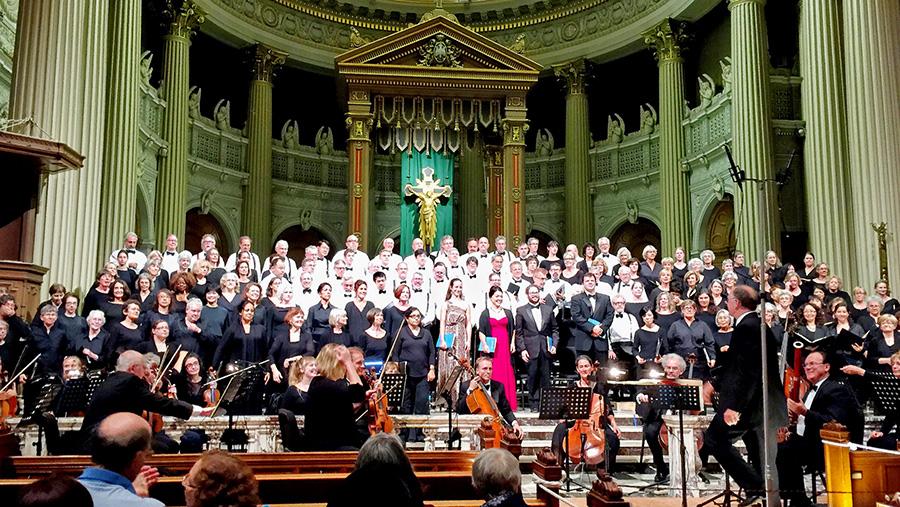
2014

Brahms: Ein Deutsches Requiem
Brahms: Nänie
Davies Symphony Hall, San Francisco
San Francisco Choral Society
Conducted by Robert Geary
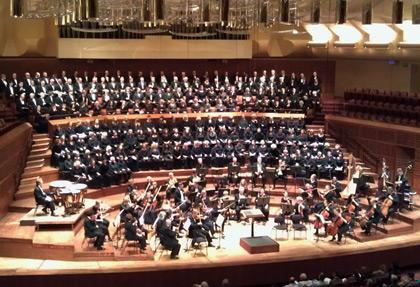
2013

Duruflé: Requiem
Costas Dafnis: Carmen Vocis
Michael Schachter: Oseh Shalom Bimromav
Keane Southard: A Day of Sunshine
St. Joseph the Worker Church, Berkeley
Berkeley Community Chorus
Conducted by Ming Luke
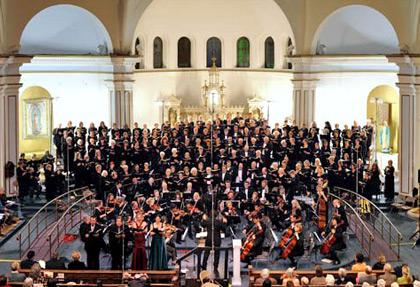
2012

Orff: Carmina Burana
Emma Lou Diemer: Songs for the Earth
Davies Symphony Hall, San Francisco
San Francisco Choral Society
Conducted by Robert Geary

2008

Mozart: Requiem
University of Nevada, Reno Symphonic Choir
Conducted by Theodore Kuchar
2000

Mozart: Requiem
Der Rheinische Kammerchor Köln
Nov 25: St. Aposteln, Köln
Nov 26: St. Remigius, Bonn
Conducted by Wolfgang Siegenbrink
Review: Kölner Stadtanzeiger 28.11.2000 – Requiem in St. Aposteln
Was ein Kirchenraum der Musik an Aura schenkt, nimmt er ihr an Struktur wieder weg. Diese Erfahrung musste man auch in St. Aposteln machen, wo Rheinischer Kammerchor und Neues Rheinisches Kammerorchester unter Wolfgang Siegenbrink ein sehr würdiges Konzert zum Totensonntag gaben: Aus dem alles überlappenden Nachhall erhoben sich, zumal in den polyphonen Partien des Mozart-Requiems, vereinzelt nur markante Themenköpfe aus dem Töneschwall. Im Chor wurde dennoch deutlich, wie sorgfältig einstudiert worden ist, welch gutes Material es gibt, welch Enthusiasmus herrscht: Ein Crescendo in Brahms'”Begräbnisgesang” strahlte enorm. Die Instrumentalisten (Hindemiths”Trauermusik” als Interludium) wirkten ordentlich; von den Vokalsolisten schlug der Tenor Andreas Winkler die Damen Silke Stapf und Marion Steingötter nur knapp. (gb)
Review: Die Kölnische Rundschau 28.11.2000 – Im milden Glanz quoll keine Träne – Volker Fries
Während die Philharmonie mit Bach frohlockte, warf in St. Aposteln der Totensonntag mit dem Rheinischen Kammerchor Köln und dem Neuen Rheinischen Kammerorchester erst noch seine düsteren Schatten voraus: Ein”Begräbnisgesang” von Brahms (op. 13), eine Trauermusik von Hindemith und schließlich Mozarts berühmtes”Requiem”. Dennoch quoll keine Träne, weil Dirigent Wolfgang Siegenbrink transparent, stilkundig und unter Verzicht auf Pomp und Pathos singen und musizieren ließ.
Glich allein schon die Auswahl des frühen, fast nie zu hörenden Brahms-Opus’ (dem Titel zum Trotz) eher einer Ausgrabung, so wurde sie dank der klaren, schlackenlosen Interpretation des Chores vollends zur Wiederbelebung. Im Orchester sorgten die Hörner sogar für erwärmenden, milden Glanz. Bei Hindemith zog sich der Chor dann kurz ins Seitenschiff zurück. So ganz allein gelassen, ging Siegenbrink mit den Streichern und Theo Lenzen als solidem Bratschensolisten vielleicht eine Spur zu vorsichtig um. Etwas mehr Espressivo und kräftigere Farben wären bei dieser in nur sechs Stunden in England (anlässlich des plötzlichen Ablebens von King George V.) komponierten Ode wohl kein Sakrileg gewesen.
Gleichwohl erwies sich auch diese spontane Hindemith-Eingebung als musikalisch reizvolle und nicht allzu schwer verdauliche Bereicherung. Bei Mozart war dann im Umgang mit der halligen Akustik Siegenbrinks Maßarbeit bei Tempowahl und Ausdrucksintensität unbedingt angebracht. Der Chor behielt auch während der kniffligen Fugenpartien bewundernswert die Übersicht und sorgte durchweg mit höchster Konzentration für klare Linien, Sopran-Angststellen in höchster Lage, wie etwa das”Salva Me”, meisterten die Damen des immerhin gut 50köpfigen”Kammerchores” lupenrein.
Das junge Solistenquartett mit Silke Stapf (Sopran), Marion Steingötter (Alt), Andreas Winkler (Tenor) und Carl Kaiser (Bass) leistete durchweg Respektables. Die in Kölner Meisterklassen geschulten Stimmen fügten sich geschliffen der souveränen, an historischer Interpretationspraxis orientierten Feinzeichnung des Dirigenten.
Review: Bonner Generalanzeiger 28.11.2000 – Besinnliches in Kirchen – Robert Fontani
Trauermusik von höchst unterschiedlicher Klangwirkung war im Konzert des Rheinischen Kammerchors in der St. Remigius-Kirche zu hören. Am letzten Sonntag im Kirchenjahr erklangen neben Mozarts Requiem der”Begräbnisgesang” von Brahms und die”Trauermusik” von Paul Hindemith. Das Kölner Ensemble bot unter der Leitung von Wolfgang Siegenbrink differenzierte Interpretationen dieser Werke. So beeindruckte der Chor in der frühen Brahms-Komposition mit einem Klang voller Transparenz, Leuchtkraft und Farbigkeit.
Die mit Brahms geweckten Erwartungen erfüllte der Chor im Hauptwerk des Konzerts, dem Mozart-Requiem, nicht immer. Zwar überzeugte das Ensemble auch hier wieder mit jugendlich-dynamischer Durchschlagskraft, ließ im Ausdruck jedoch bisweilen ein gewisses Maß an Fantasie vermissen. Vielleicht war dies auch eine Folge der von Siegenbrink sehr entschlossen gewählten, extremen Tempi.
Beeindruckend agierte das Solistenquartett; während Silke Stapf, Sopran, und Marion Steingötter, Alt, ihre Qualitäten eher im Lyrischen bewiesen, zeigten Tenor Andreas Winkler und Bass Carl Kaiser Sinn für dramatische Passagen.
Eine solide Leistung bot das Neue Rheinische Kammerorchester mit wohldosierter Dynamik im Zusammenspiel mit dem Chor und sanft pastosem Klangbild in der”Trauermusik” für Viola und Orchester von Hindemith, zu der Theo Lenzen ein mit sanftem Schwung gestaltetes Solo beitrug
1998

Haydn: Lord Nelson Mass
Brahms: Darthulas Grabesgesang
Pablo Casals: O Vos Omnes
Moses Hogan: ev’ry Time I Feel the Spirit
Michael Haydn: Tenebrae Factae Sunt
St. Ignacious Church, San Francisco
San Francisco Choral Society
Conducted by Robert Geary
1993

Fauré: Requiem
Poulenc: Gloria
Davies Symphony Hall, San Francisco
San Francisco Choral Society
Conducted by Bruce lamott
Sunday’s Twin Bill Serendipity – Review by Robert Commanday, San Francisco Chronicle, March 30 1993
Two overlapping concerts Sunday afternoon were attractive enough to warrant double dipping: the Faure, Requiem half of the San Francisco Choral Society’s program in Davies; Hall and then pianist Reah S Sadowsky’s recital In the Veterans Building Green Room.
The Choral Society of more than 200 singers and a skilled orchestra was under a guest conductor, Brute Lamott, who worked a special touch with the quintessentially French Faure. Sadowsky played Schubert, Mendelssohn, Berg and Debussy, all of
them beautifully. It was a twofer.
Refinement, lightness. Precision and restraint characterized Lamott’s approach. Initially With Faure’s orchestral suite,” Masques et Bergamasques”.
That was an Inventive and appropriate choice as prelude to the Requiem. The suite, a Faure homage In 1919 to the music of the 18th century court, set the frame for the subtleties of the deceptively simple, quite sophisticated style. Lamott conducted with poise, exactness and a grace that elicited the buoyant rhythms and pliant phrases of the four dance-modeled movements.
Hushed Pianissimo
He then addressed the most sensitive of requiem with the same finesse. That was essential to reconcile the uncommonly large Choral Society to the intimate mature of the work. The choral music is often prayer, in effect, intoned in hushed pianissimo (and the bush of a large chorus sounds more mystical, embracing and awed than the soft singing of a ~ choir). Faures shapely, calm melodies floating over the even slow march of his harmony made difficult demands on the singers’ vocal control and support. Some, times tenor and soprano sections came a hair below the centered pitch of perfection – failing from grace, their tone was not quite pure and hallowed.
The solos for baritone, limited in range almost In plain chant manner, and the soprano’s Pie Jesu, a more gracious and personal reverence also were contained. laura Clayemb wisely brought her vibrant voice down small, at the cost however of pliancy In the phrasing. Leroy Kromm sang the baritone In a high, tenor-like voice with a slight grainy tone that he darkens on top and was most effective In the Libera me, A remarkably acute organist, Tom Rhoads, was crucial to this close knit performance.

Brahms: Schicksalslied
Davies Symphony Hall, San Francisco
San Francisco Choral Society
Conducted by Magen Salomon
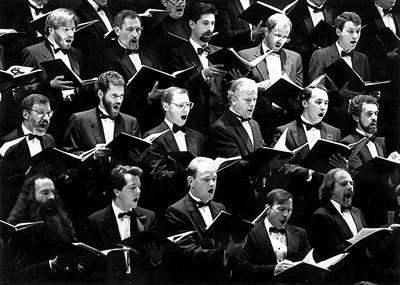
1992

Beethoven: Missa Solemnis
Davies Symphony Hall, San Francisco
San Francisco Choral Society
Conducted by Adrian Horn
October 15 & 18
Orff: Carmina Burana
Gounod, Berlioz & Boito: Faustian Scenes
Davies Symphony Hall, San Francisco
San Francisco Choral Society
Conducted by Adrian Horn

Beethoven: Missa Solemnis
Davies Symphony Hall, San Francisco
San Francisco Choral Society
Conducted by Adrian Horn
Beethoven Inspires Best in Vocalists – Review by Robert Commanday, San Francisco Chronicle, April 7 1992
Beethoven’s Missa Solemnis Is a kind of miracle and its latest performance by the San Francisco Choral Society in Davies Hall, on Monday demonstrated the inspirational effect it can have on its performers. If they have the good will, some talent, and much intelligence this most demanding of choral mark of the classic/romantic repertory can raise their collective effort to the heights.
In short, these 275 choristers an orchestra of professional musicians from here and there and a solo quartet of non-celebrity but well qualified singers performed the Missa Solemnis more than well. They did it convincingly. It was the conductor, you say. Yes, but in part. Adrian Horn who founded the Choral Society is an extraordinary leader to have drawn this group together and taken it through eight major works In its three years for audiences which now fill Davies to capacity.
How he brings off the performance, however is a mystery. He is a most unprepossessing and undynamic conductor and by all odds it shouldn’t work. With soft hands and even gestures, Horn indicated the tempo and little more, hardly suggesting the momentous scenario and range of musical expression. He cued lightly and infrequently. Yet although the possibility that he was inspiring anything seemed remote, a significantly expressive performance occurred. So much for charisma.
Careful Preparation
It was as if someone else had prepared it all and so well that anther could lead it. Careful not to impose much of himself. Clearly, However, Horn, who has considerable training and experience, had conceived, organized and rehearsed these forces to the point where they would produce this masterwork from inside themselves. This deserves credit at least equally to the conventionally directed performance emanating from a single source, centered in one authority’s inspiration. While teaching the choristers how to sing it, Horn gave them an understanding of the Missa Solemnis from which they could create their performance, making musically manifest this greatest of conceptions of the mass.
The manifold prayer attitudes Beethoven struck in the Kyrie were there, outreaching, enfolding. The intimate and personal sentences within the jubilation of the Gloria and the great dramatic statement of the Credo were there. The chorus did not shrink or falter, maintaining the pace when It was driving, holding the intonation, the collective sound sufficient. Many if not most of the voices were lightweight and section tone was generally open with hardly a trace of coloring but chorally and textually, the integrity was there. So the Et vitam venturi fugue at presto was wavy lines and the sopranos clung to the high B flat by their fingertips, so what, It was there.
Emotional singing
The cherished music was the Benedictus portion of the Sanctus and the Agnus Dei- Although a miscue and inattention from Horn caused two bobbies, his affection for these most moving parts of the Missa was pervasive. To be sure, these soloists had it in them and sang with genuine feeling. Helen Dilworth, a light soprano for Beethoven, made her fine line count and most musically. Similarly, the mezzo soprano Unda Childs sang excellently that inner part with inner feeling.
The two men took the melodic initiative, impressively paired. In his baritonish tenor, Daniel Harper projected the music’s personal character warmly. David Tigner, a fully developed, mature artist long resident here, was outstanding, fervent, compassionate, his bass deeply, evenly resonant, leading the bassoon and cello line. The seraphic violin solo that with the trilling flute blesses the Benedictus was beautifully done and in a sweet, clear and carrying tone by the young concertmaster, Carol Kutsch. The orchestra served Beethoven with honor.

First Congregational Church, San Francisco
San Francisco Community Chorus & Orchestra
Conducted by Urs leonhardt Steiner
1991

Mozart: Mass in C minor
St. Mark’s Church, berkeley
Berkeley Community Chorus
Conducted by Aileen Sagan
1990
1988
1987
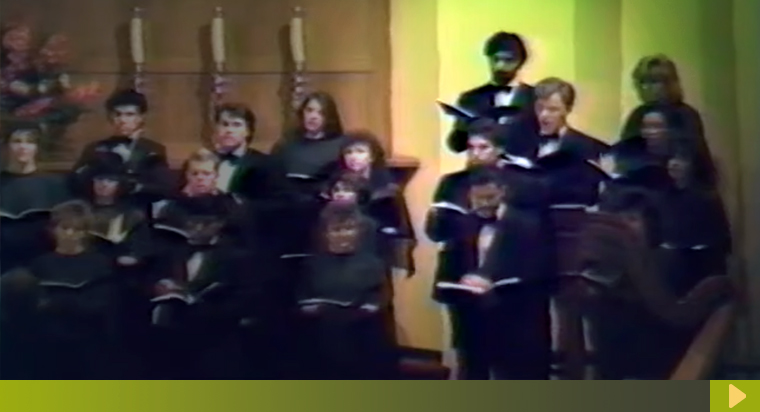
Brahms: Motet opus.29 No. 2
Richard Strauss: Allerseelen
Trinity Episcopal Church, Reno
University of Nevada – Reno Concert Choir
Reno Chamber Orchestra
Conducted by Perry Jones
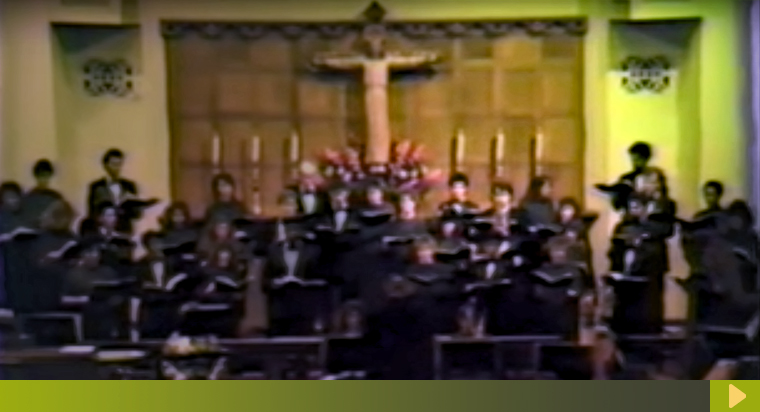
Rutter: Requiem
Trinity Episcopal Church, Reno
University of Nevada – Reno Concert Choir
Reno Chamber Orchestra
Conducted by Perry Jones
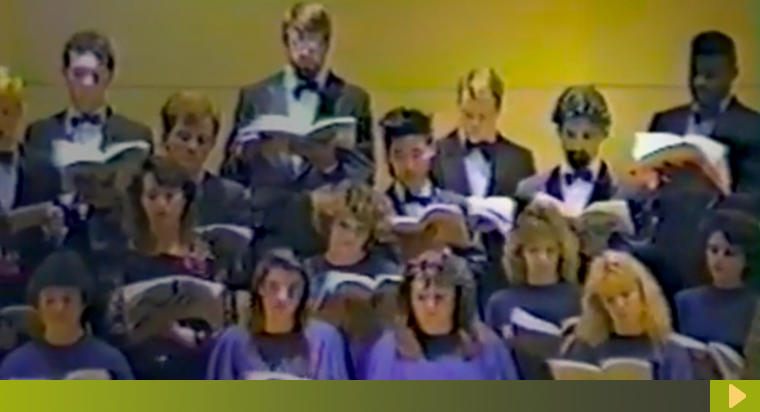
Handel: The Messiah
University of Nevada – Reno Nightingale Concert Hall
University of Nevada – Reno Concert Choir
Reno Chamber Orchestra
Conducted by Vahe Khochayan
1986

Haydn: Lord Nelson Mass
Trinity Episcopal Church, Reno
University of Nevada – Reno Concert Choir
Reno Chamber Orchestra
Conducted by Vahe Khochayan
March 16
Josquin Des Prez: Tu Pauperum Refugium
Haydn: Sanctus from Mass in Time of War
Barber: Sure on This Shining Night
Randall Thompson: Frostiana
University of Nevada – Reno Pine Room
University of Nevada – Reno Symphonic Choir & Orchestra
Conducted by Michael Cleveland
April 29
Beethoven: Symphony No. 9
Pioneer Center for the Performing Arts, Reno
University of Nevada – Reno Symphonic Choir
Reno Philharmonic Orchestra
Conducted by Ron Daniels
December 9
Haydn: Missa Brevis St. Joannis de Deo,
Short pieces by Brahms, Holst & Vaughn Williams
University of Nevada – Reno Pine Room
University of Nevada – Reno Symphonic Choir & Orchestra
Conducted by Michael Cleveland
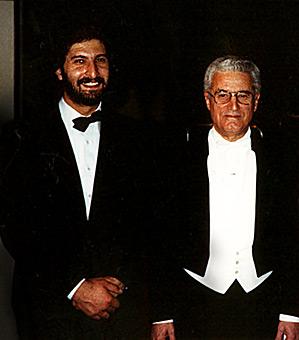

Duruflé: Requiem
Trinity Episcopal Church, Reno
University of Nevada – Reno Concert Choir
Reno Chamber Orchestra
Conducted by Vahe Khochayan
1985
March 24
Fauré: Requiem
Trinity Episcopal Church, Reno
University of Nevada – Reno Symphonic Choir & Orchestra
Conducted by Kenneth Tuttle
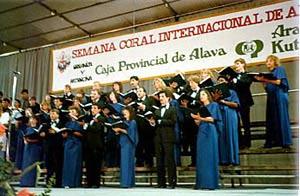
December 3
Vivaldi: Magnificat
Telemann: Psalm No. 117
Mozart: Ave Verum
Fauré: Cantique de Jean Racine
First United Methodist Church, Reno
University of Nevada – Reno Symphonic Choir & Orchestra
Conducted by Michael Cleveland
December 8
J. S. Bach: Magnificat
Byron Peterson: Christmas trilogy
Robert Olson: Shout
First United Methodist Church, Reno
University of Nevada – Reno Symphonic Choir & Orchestra
Conducted by Michael Cleveland
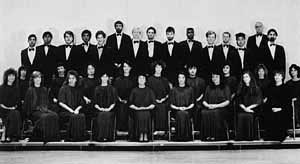
1984
1982
May 9
Poulenc: Gloria
Pioneer Center for the Performing Arts, Reno
University of Nevada – Reno Symphonic Choir
Reno Chamber Orchestra
Conducted by Perry Jones
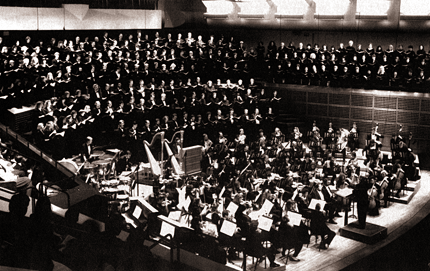
1981
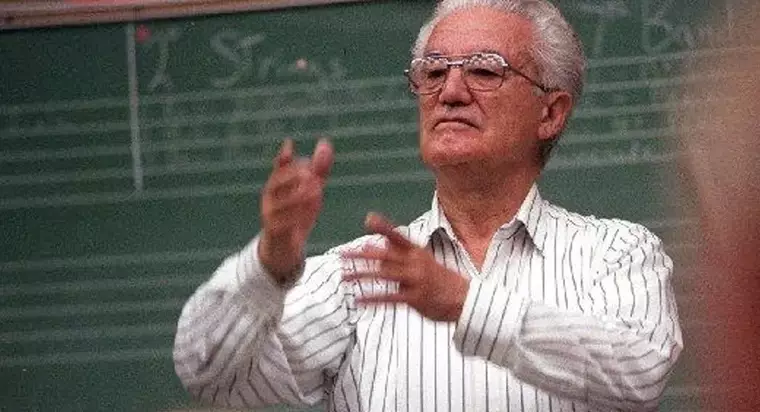
Mozart: Requiem
Pioneer Center for the Performing Arts, Reno
Carson City Convention Center
University of Nevada – Reno Symphonic Choir
Reno Chamber Orchestra
Conducted by Vahe Khochayan

